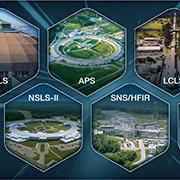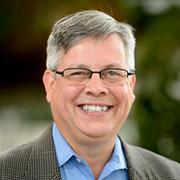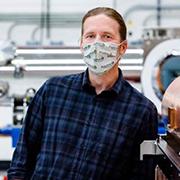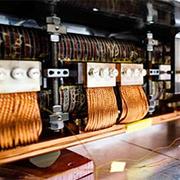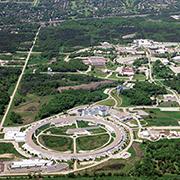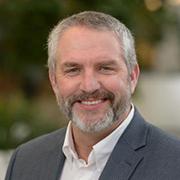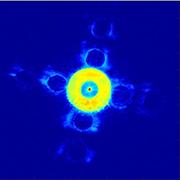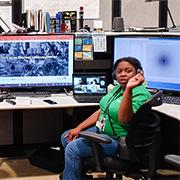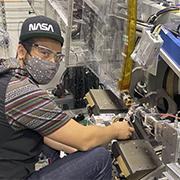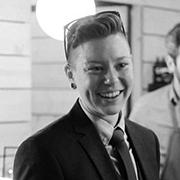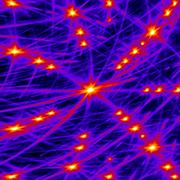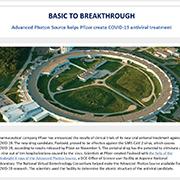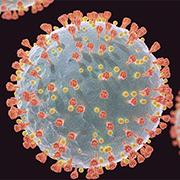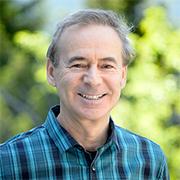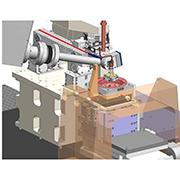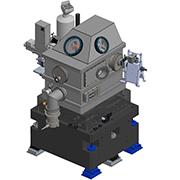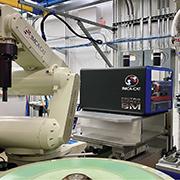News Feed - APS/User News
How the pandemic steered user research facilities on an unexpected journey of adaptation.
John Quintana has been named to lead the Photon Sciences Mission Readiness Group. John will spearhead the efforts needed to ensure the APS facility is ready to come back online promptly after the APS Upgrade Project installation is complete.
Kasa and his colleagues are designing and building superconducting magnets for the upgraded Advanced Photon Source. These magnets operate at far below freezing temperatures and help create world-leading levels of brightness for x-rays.
Prototypes of new superconducting magnets for the upgraded Advanced Photon Source were successfully lowered to their operating temperatures, far below zero. These new magnets will help the APS generate more powerful X-rays more efficiently.
2021 was a big year for discoveries at the U.S. Department of Energy’s Argonne National Laboratory. From improving solar cells and brain imaging to combatting COVID-19 and developing better nuclear reactor models, Argonne researchers accelerate science and technology to ensure American prosperity and security. From a list of scientific breakthroughs enabled by research at Argonne, here the advances based on research at the DOE's Advanced Photon Source.
Jim Kerby, currently the project manager for the Advanced Photon Source Upgrade (APS-U) project, will be named interim director of the APS-U, effective December 23, 2021. Bob Hettel will transition to a new role as advisor to Laurent Chapon, the incoming associate laboratory director for Photon Sciences and APS director. Elmie Peoples-Evans, currently APS-U deputy project manager, will step into the role of interim project manager.
The Advanced Photon Source will hold a virtual town hall for users interested in the project to enhance the 12-ID beamline. The town hall runs from 10 a.m. to 11:30 a.m. CT on Tuesday, January 25, 2022.
For more than a decade, two U.S. Department of Energy national laboratories have joined forces to give graduate students valuable firsthand experience with powerful scientific instruments.
Along the winding path of post-secondary education, Shua Sanchez found his footing as a scholar and scientist. This included work at X-ray Science Division x-ray beamlines at the U.S. Department of Energy’s Advanced Photon Source at Argonne National Laboratory.
Fanny Rodolakis of the Advanced Photon Source was a big hit with the Lowell Elementary (IL) fifth graders when she spoke to them virtually about science under the auspices of the Argonne National Laboratory STEM Chat program sponsored by Argonne Education and Outreach.
Katie Martin knows the value of a long-term investment. As a project controls manager for the U.S. Department of Energy’s Argonne National Laboratory, Martin’s job is to manage the cost and schedule for long-term construction projects, working with the scientists and engineers to keep things on time and within budget. Some of these projects, like the APS Upgrade, can span years and cost hundreds of millions of dollars, and Martin keeps track of every day and every dime.
The Advanced Photon Source will hold a virtual town hall for users interested in the project to construct the 3D Micro and Nano Diffraction (3DMN) and ATOMIC beamlines at 34-ID. The town hall runs from 10 a.m. to noon CT (UTC-6) on Monday, December 6.
A new drug candidate, Paxlovid, which has proven to be effective against the SARS-CoV-2 virus, and a superionic ice that is neither liquid nor solid, both based on research at the Advanced Photon Source, are featured in the November 15, 2021 issue of the U. S. Department of Energy “Communique” e-newsletter.
For more than a decade, scientists using the Advanced Photon Source—a U.S. Department of Energy Office of Science user facility at DOE’s Argonne National Laboratory—have been making pivotal discoveries that are helping in the battle against COVID-19.
Alexander (Sasha) Zholents, Glenn Decker, and Arista Thurman have been presented with awards by the UChicago Argonne, LLC Board of Governors.
Yine Sun has been appointed as group leader of the Argonne Accelerator Systems Division Accelerator Operations and Physics Group at the U.S. Department of Energy’s Advanced Photon Source.
The Advanced Photon Source will hold a virtual town hall for users interested in the project to construct the In Situ Nanoprobe (ISN) at 19-ID in the Long Beamline Building and the PtychoProbe beamilne at 33-ID. The town hall runs from 10 a.m. to noon CT on Thursday, December 2.
The Advanced Photon Source will hold a virtual town hall for users interested in the project to enhance the Bionanoprobe and the Microprobe imaging capabilities at 2-ID. The town hall runs from 10 a.m. to noon CT on Tuesday, November 30.
Scientists at Pfizer created Paxlovid, a new drug candidate that proved to be effective against the SARS-CoV-2 virus, which causes COVID-19, with the help of the U.S. Department of Energy’s (DOE’s) Advanced Photon Source at the DOE’s Argonne National Laboratory.
The cycle of rising temperatures leads to increases in precipitation as well as droughts. What impact will these weather extremes have on Earth’s most effective water cleansers: wetland sediments? That question drives a $1 million, three-year U.S. Department of Energy grant awarded to a Georgia Institute of Technology research team of geochemistry, biology, and applied mechanics experts. Georgia Tech sediment samples will be examined at the atomic scale of individual atoms and electrons the DOE Office of Science's Advanced Photon Source.

